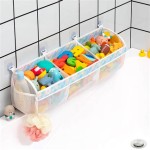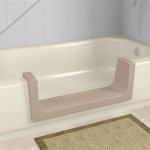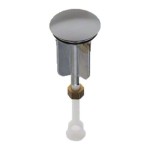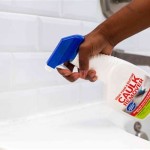How To Sit Comfortably In A Bathtub
Enjoying a relaxing bath is often considered a quintessential way to de-stress and unwind. However, finding a comfortable position in a bathtub can be a challenge, especially for those with back pain or other physical limitations. The right setup can make all the difference, transforming your bath into a truly enjoyable experience. This article explores effective techniques and considerations for achieving optimal comfort in a bathtub.
1. Positioning and Support
The choice of seating position in a bathtub significantly impacts comfort levels. For those with back pain or limited mobility, a reclined posture can be a suitable option. Reclining against the back of the tub allows for proper spinal support and reduces pressure on the lower back. This position can be achieved with the aid of a bath pillow or a rolled-up towel positioned behind the back.
For a more upright seating position, consider using a bath seat or a waterproof stool. These aids provide a stable platform to sit on, preventing slipping and ensuring a comfortable and secure experience. Ensure the height of the seat or stool is appropriate, allowing your feet to rest comfortably on the bottom of the tub.
2. Temperature and Water Level
The water temperature plays a crucial role in relaxation and comfort. Striking the right balance is essential. Water that is too hot can lead to discomfort and even burns, while water that is too cold may not provide adequate warmth. The ideal bath temperature for most people ranges between 98°F and 102°F (37°C and 39°C). It is recommended to test the water with your elbow first to ensure it is comfortably warm before immersing your whole body.
The water level also affects comfort. Consider the depth of the tub and the height of your seating position. Aim for a water level that allows you to comfortably immerse most of your body without feeling cramped or overwhelmed. If necessary, adjust the water level by adding or draining water as needed to achieve the desired height.
3. Bath Accessories and Enhancements
Bath accessories and enhancements can greatly enhance comfort and create a spa-like experience. A bath pillow provides neck and back support, promoting relaxation and reducing strain. Bath bombs release soothing scents and oils, creating a calming and luxurious atmosphere. A bath mat placed outside the tub provides a secure and non-slip surface to step onto after bathing. Additionally, consider using essential oils like lavender or chamomile to create a tranquil and aromatic setting.
4. Personal Preferences and Considerations
Ultimately, comfort in a bathtub is a matter of personal preference. Experiment with different seating positions, water temperatures, and accessories to find what works best for you. Consider factors like body shape, height, and any physical limitations. For individuals with specific health conditions, it is advisable to consult with a healthcare professional before making significant changes to their bath routine.
For a more luxurious bath experience, try adding Epsom salts to the water. Epsom salts are known for their muscle-soothing properties and can help alleviate aches and pains.
Remember, a comfortable bath is an individual experience. By paying attention to your needs and preferences, you can create a relaxing and enjoyable bathing experience that promotes well-being and relaxation.

How To Make Your Bath Tub More Comfortable Sheet Market

How To Sleep In A Bathtub 9 Steps With Pictures Wikihow

How To Take A Sitz Bath At Home Step By Guide

Bench A Convenient Safe Easy To Install Wooden Bath Extras Llc

Bellavita Bath Tub Chair Lift Enhanced Comfort And Safety For Arthritis Limited Mobility

Faq Bath Bean Luxury Accessory
What Is The Most Comfortable Way To Sit In A Bathtub Quora

How To Sleep In A Bathtub 9 Steps With Pictures Wikihow

Water Sex 28 Tips And Tricks For In Bath Shower Hot Tub More

Need A Walk In Bath Consider Dad S Construction Bathtub Replacement








